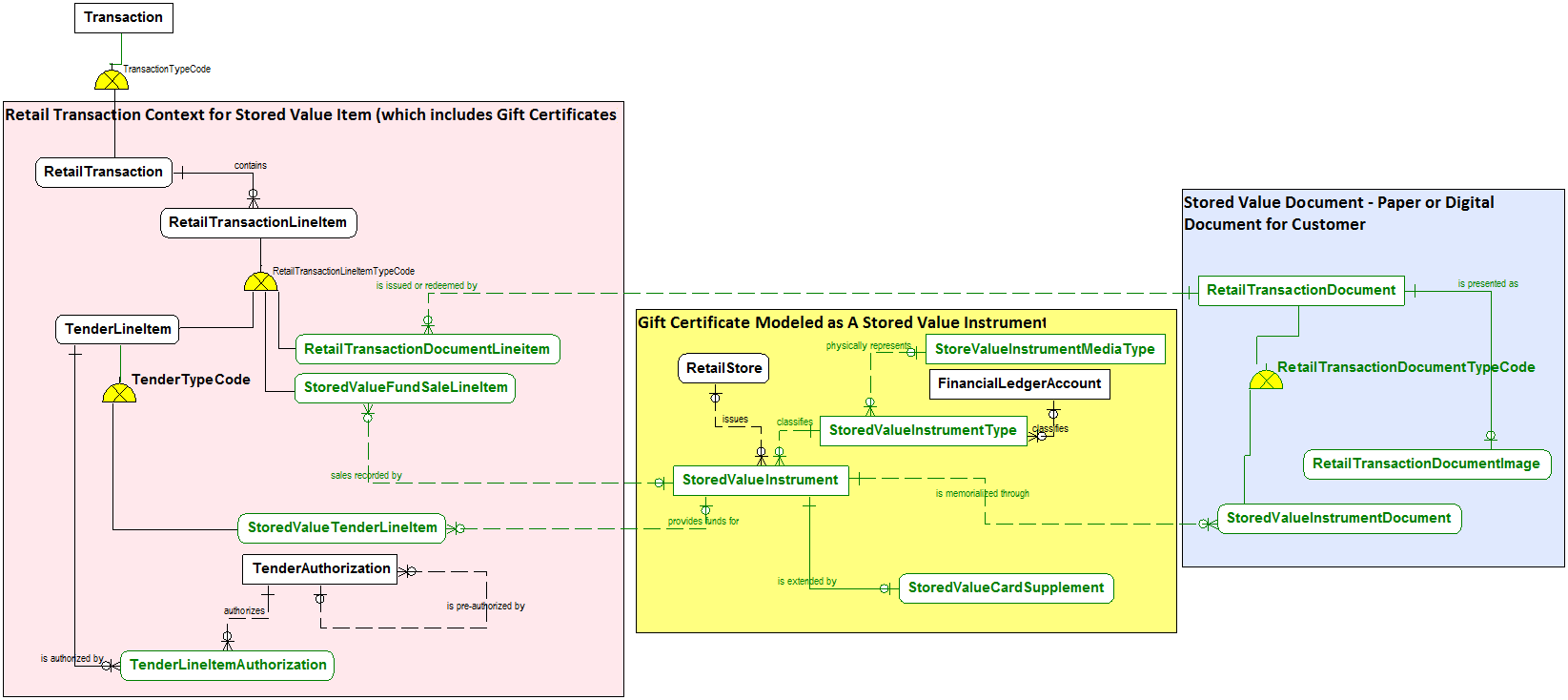Subject Area Concepts This subject area replaces the retail transaction gift certificate subject area in earlier versions of the ARTS ODM. A gift certificated is one kind of stored value instrument. There are many other kinds as discussed in this topic. With this version of the data model the concept of a generalized stored value instrument replaces the narrow, paper bound gift certificate. Logical 02390 presents stored value instruments within the context of a retail transaction. The figure here shows the entity types used to represent the sale and issue of a StoredValueInstrument as well as its tendering and redemption. Retailers have moved way beyond offering paper gift certificates. They may offer an in-house, proprietary gift card or cash card, third-party cash or debit cards, vouchers, electronic prepaid cash, etc. This is the reason why the gift certificate moniker for this subject area is replaced by stored value instrument. Figure 62 - Stored Value Instruments Within Retail Transaction Context
There is a separate topic that addresses the complete life cycle and enterprise level treatment of stored value instruments at Stored Value Instruments. Stored value media, like debit cards typically require an authorization before it is accepted as payment in a retail transaction. On the payment, tender side of a retail transaction this is handled through the TenderAuthorization entity which uses a third party service or a point of sale-based service to authenticate the stored value instrument. There is an analogous process on the sell stored value instrument of a retail transaction, but its authorization is handled as a type of tender control transaction which places it outside the scope of a retail transaction. The sell side authorization process for stored value instruments is part of the activation process which is supported by the aforementioned tender control transaction type. This is covered in theStored Value Instruments referenced earlier. |
